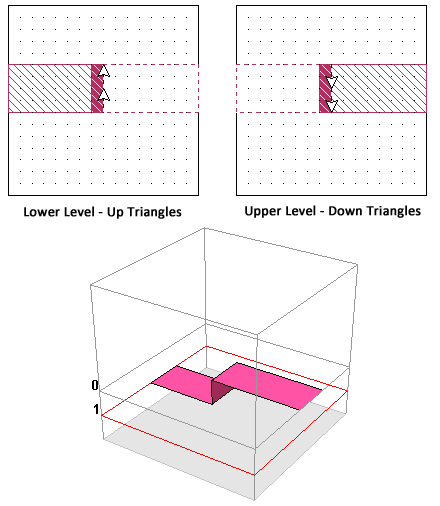Edge vias are vias that are attached to the edge of a metal polygon. As mentioned earlier in Via Polygons, edge vias provide a quick, convenient way to add a one cell wide via which extends for the length of the polygon edge. Edge vias are of the same metal type as the polygon to which they are attached. The actual via metal is shown by the fill pattern which is the reverse video of the planar metal pattern. The example shown below uses an edge via to connect two polygons on adjacent levels.

Enough via subsections are placed to cover the entire length of the polygon edge. If you change the cell size, then the via is re−subsectioned into via subsections with the new cell size.
Loss in an edge via is modeled using the loss model of the planar metal type of the polygon to which the edge via is attached. Edge via subsections are always one cell wide, but be aware that the total DC loss of the edge via is independent of the subsection size. For example, if your edge via is modeled using one micron thick Gold, but your cell size is five microns, then the loss is based on the via being one micron thick not five microns.